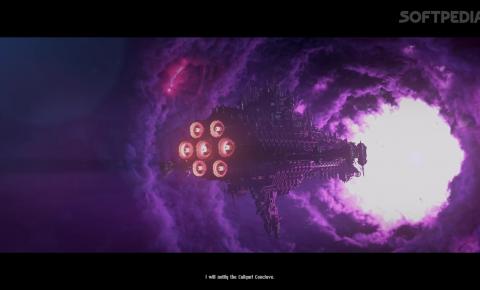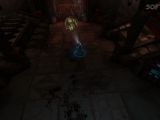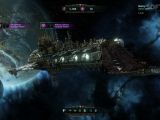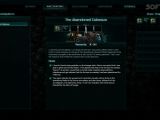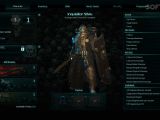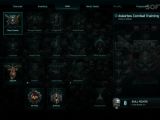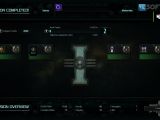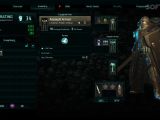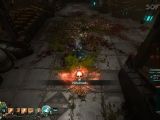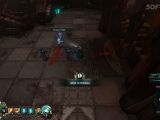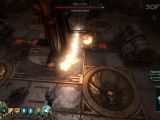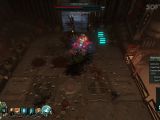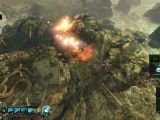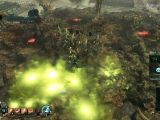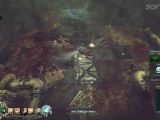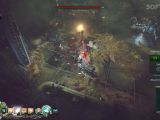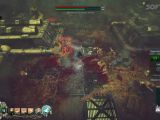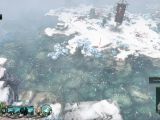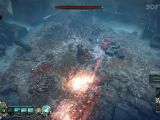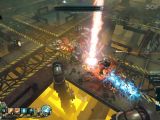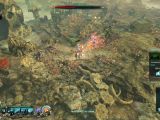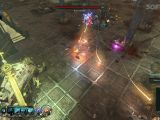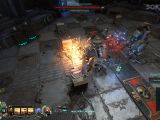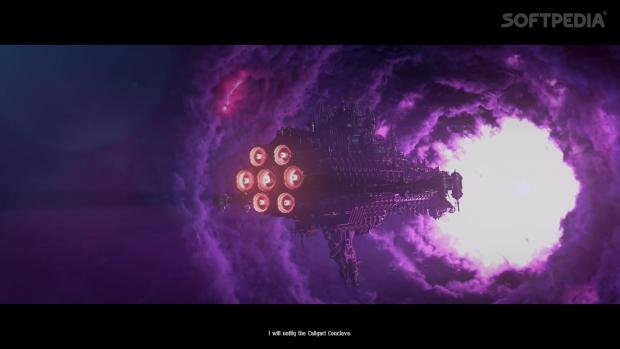Warhammer 40,000: Inquisitor – Martyr is an action RPG from NeocoreGames, and it’s the kind of entertainment you didn’t really know you wanted until you play it. The game is not perfect, but the concepts used in its development are more than interesting and makes the end product fun to play.
With so many games set in the Warhammer universe, people might start to get them confused. It helps a little bit that it’s the Warhammer 40,000 universe and not the fantasy variation, but it’s still a little bit confusing, even for players closely following the lore.
Of course, the game is based on a license from Games Workshop, a company that seems to be granting the rights to any studio, no matter the genre. It’s a mystery why no one has tried developing a proper action RPG until now, using Warhammer 40,000 as a base, but that’s no longer the case. If anything, I was expecting someone like Relic Entertainment to do this at some point, especially since their RTS titles are pretty close.
We also have to remember that Games Workshop and the Warhammer 40,000 franchise has been around for many years, with board games and books establishing the backstory and lore. While not everyone might be fluent in this almost sub-culture, there is no excuse to at least to try to get up to speed.
Story and gameplay
The developers from NeocoreGames built an entirely new sector named Caligari specifically for Warhammer 40,000: Inquisitor – Martyr, with the blessing of Games Workshop of course. It’s a vast map, separated into multiple star systems, each with its own points of interest.
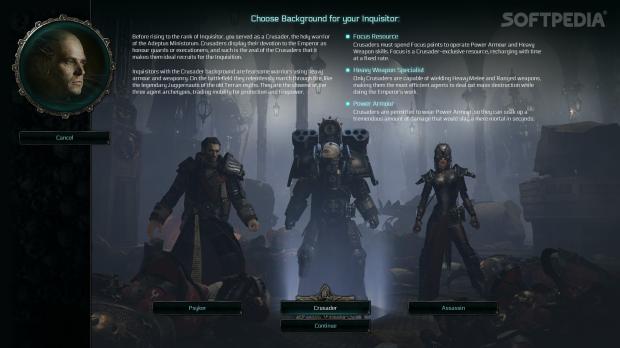
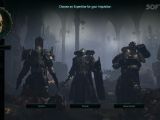
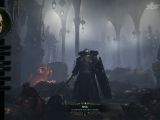
Players will take on the mantle of an Inquisitor, which is considered to be a like a special envoy of the Emperor. It’s a character with unlimited power and no oversight, making it feared throughout the Empire. Of course, it all happens in the 41st millennium, which would explain the setting for the game as well.
A number of character types are available at the start, and they pretty much define the way you’re playing the game. Choosing between Crusader, Assassin, and Psyker, along with their subclasses is essential, ensuring a little of bit replayability.
And now, a little bit of backstory is necessary. At this point, the human race has spread out into the galaxy, and it’s being united in a single empire ruled by an Emperor that has massive power and is pretty much a god. He acts as a guardian to the human race, holding back the Gods of Chaos.
Around him, the society is built like an ancient feudal system, which also happens to include an Inquisition and Inquisitors. They are protecting the weak mind of the people against corruption and purge anyone that even remotely steps out of line.
As Inquisitor, players have the right to go anywhere and to do anything. No one questions them, and they act only in the best interest of the god-emperor.
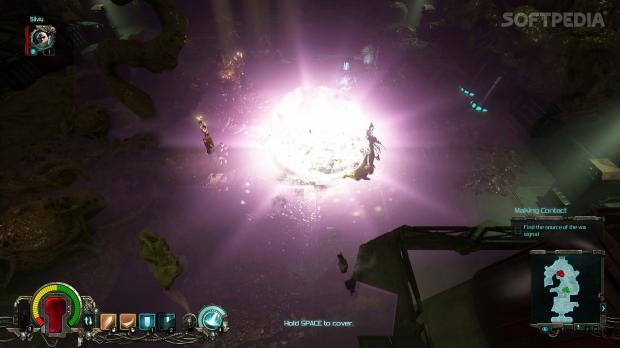
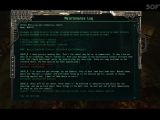
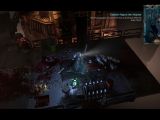
The story picks up when an Inquisitor is sent to investigate the reappearance of a massive Monastery ship, called the Martyr, that disappeared 5000 years prior. The ship is infested with creatures created by the Chaos God Nurgle, who’s described as the avatar of infection and pestilence.
Things become a little bit complicated when you find out that another Inquisitor was sent there a while back, and he seems to have gone rogue. It turns out that the captain of the ship took its people through some dangerous experiments, and they let loose the agents of chaos into our realm. The reasons are not known, at least at the start, but they point towards a conspiracy and at events that would shake the order in the entire empire.
All of this can be deduced from the gameplay and exposition in the game, and it makes for a pleasant reading, especially if you like the Warhammer 40,000 universe.
This takes us to gameplay, and as I said, it's an action RPG. The most common reference that I can name is Diablo, but that’s not entirely accurate. It’s a similar isometric perspective, but it’s different in pretty much every other way.
You move around with the mouse and use your weapons to defeat enemies. It’s not a complicated system, especially since you don’t have spells or anything similar. On the other hand, depending on what you’re using, you do have unique moves and abilities. For example, when you gave a chainsword, specific actions are available, which are different from the ones from a regular power sword.
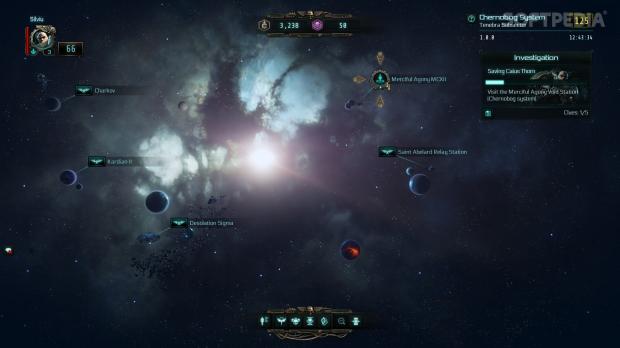
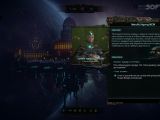

The same is true for regular weapons, which is a nice change. Abilities are not linked necessarily to the class, but to the weapons and items being used, and they are very different. If we take into consideration the vast number of skills and the various branches of the skill tree, we get enough complexity that can’t be explored in one playthrough.
The truth is the Warhammer 40,000: Inquisitor – Martyr gathers a lot of stuff under the same roof but doesn’t really explains the ideas and concepts that are thrown at you. The first part of the campaign is used as a tutorial for combat and such, but the rest is relegated to reading various texts to learn how things are working.
For example, it took me a while to figure out how to configure the Inoculator or how to craft weapons. Not to mention the Tarot Cards which can be used to generate specific missions based on your level, with very particular rewards.
If we take into account the really large map, procedurally generated levels, PvP multiplayer, co-op multiplayer, and everything else, it’s easy to see why it might be a little bit overwhelming. It will take a while to understand how everything works unless you’re willing to read pages upon pages of tutorials.
Balancing and level design
As it turns out, balancing is a really important part of any RPG, and Warhammer 40,000: Inquisitor – Martyr need to do this right as well. The problem is that it’s not doing it right, or at least not all the time.
Like most complex titles, when you get too much stuff crammed in, you will eventually start problems even if that’s not your intention. And that means having enemies that regenerate health faster than you can do damage, or enemies are way too powerful even if you’re in a map that’s below your power level.
Because everything is generated around the dynamic power level of the character, you might start to think that you’re making the right choices, but starting a map with a much lower power level won’t mean that you’re going to go through it without any problems.
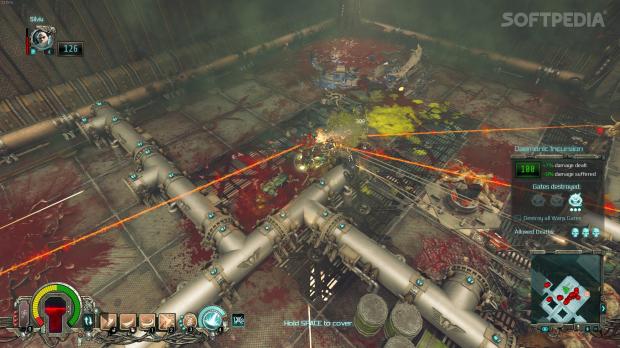
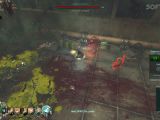

Granted, the two patches that have been released so far have fixed some of the problems, but the biggest one remains. Trying to go through a mission that’s just a little bit over your power level is still very difficult.
At the same time, these missions are the ones with the most significant chance of providing some proper gear, causing a nasty loop. You get stuck playing maps that can be finished with a little bit of work, but they offer poor rewards.
Fortunately, the shop offers some reasonably good equipment, from time to time, and it gets refreshed every 60 minutes. It’s a tradeoff because it means you have to play some of the automatically generated missions to have enough credits.
And this takes us to level design. The beginning levels set up a really dark tone for the entire experience, very reminiscent of the first Diablo. Initially, the levels are exciting and pretty varied, but as time passes you will notice that the variation doesn’t hold up.
Since the game uses procedurally generated levels, you might think there is enough variation to keep everyone happy. And, on top of that, the sheer number of solar systems and points of interest suggest that there is more than enough for players to explore.
The sad situation is that there is minimal variation, and the levels all look and feel the same, and that feeling arrives after only a few hours of gameplay. You’ll quickly start to recognize distinct elements of level design, even if you’re on a planet, or on a ship.
The only deviations from the sameness are present in the main storyline, which provides some compelling new scenery, but not by much. On the other hand, most of the game you’ll move around trying to find better gear or finding enough stuff to sell. It’s entirely possible that some players will completely ignore the repetitive nature of the level design.
Graphics
Warhammer 40,000: Inquisitor – Martyr has a distinct feel, and that’s due to the engine used by the developers. The effects applied to textures and characters provide the game with a signature, allowing anyone to identify what’s being played with a single look.
I know that it’s probably only in my head, but strangely enough, Martyr reminds me of a much older game, called Crusader: No Remorse (and its sequel Crusader: No Regret) that were launched back in 1995. It wasn’t an RPG, but it offered the same kind of isometric perspective, and it shared one other similarity.
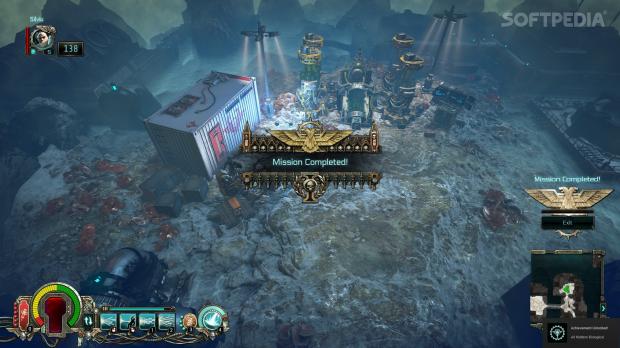
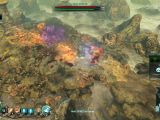
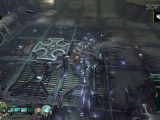
Back then, the 3D engines were really primitive, so the developers had to improvise. In Crusader, they were using sprites and scripted animations. A similar effect is present in Martyr but supported by a much more powerful engine.
All weapons have a real impact force and very different effects, and the enemies usually disintegrate completely due to the strength of the weapons. The animations are outstanding, and the graphical effects for laser, plasma, and just bullets are incredibly satisfying.
The engine does have some problems with anti-aliasing and some other minor issues, but overall the game looks good enough. I would have benefited from another year in development, but if we keep in mind that it already spent quite some time in early access, we could see why the team wanted to releases it.Also, the team insisted a lot of on characters and enemies using destructible covers. While it's a good idea, in principle, it rarely works in-game. The AI is good enough to take cover, from time to time, but the main character doesn't really need it.
The Good
- Interesting story
- Satisfying graphical effects
- Interesting weapons and armor
The Bad
- Not enough variation
- Not enough explanations for important features
- Improper balancing in some maps
Conclusion
By every time I returned because it never gets old disintegrating enemies with a shotgun or melting them with lasers. And, I have to admit that the story made me curious enough to pursue it and to learn more about Inquisitors and their role in the empire.
All in all, I think that Warhammer 40,000: Inquisitor – Martyr should provide more than a satisfactory experience. Just don’t look too much under the hood or try to find the reasons behind some of the developer’s decisions. It’s a decent exploration of the Warhammer universe, and it’s more than capable of gobbling up your hours, if you’re not careful.
 14 DAY TRIAL //
14 DAY TRIAL // 